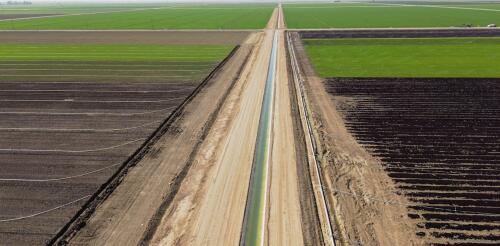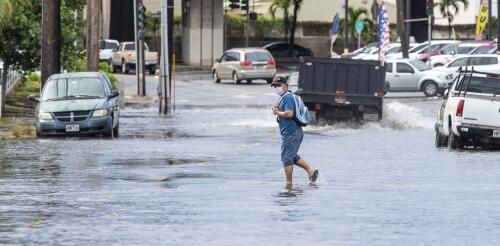Climate change
Arizona, California and Nevada have narrowly averted a regional water crisis by agreeing to reduce their use of Colorado River water over the next three years. This deal represents a temporary solution to a long-term crisis. Nonetheless, as a close observer of western water policy, I see it as an important win for the region. Seven western states – Colorado, Wyoming, Utah, New Mexico, Arizona, Nevada and California – and Mexico rely on water from the Colorado River for irrigation for 5.5 million acres and drinking water for 40 million people. Their shares are apportioned under a compact negotiated in 1922. We now know, thanks to tree-ring science, that its framers wildly overestimated how much water the river contained on a reliable basis. And climate change is making things worse. Some recent commentators have argued for revamping the compact. The lawyer in me shudders to think of the utter chaos that would ensue as states, tribes that were left out of the original...
Honolulu has lost more than 5 miles of its famous beaches to sea level rise and storm surges. Sunny-day flooding during high tides makes many city roads impassable, and water mains for the public drinking water system are corroding from saltwater because of sea level rise. The damage has left the city and county spending millions of dollars on repairs and infrastructure to try to adapt to the rising risks. Future costs will almost certainly be higher. More than US$19 billion in property value, at today’s dollars, is at risk by 2100 from projected sea level rise, driven by greenhouse gas emissions largely from the burning of fossil fuels. Elsewhere in Honolulu County, which covers all of Oahu, many coastal communities will be cut off or uninhabitable. Unwilling to have their taxpayers bear the full brunt of these costs, the city and county sued Sunoco LP, Exxon Mobil Corp. and other big oil companies in 2020. Their case – one of more than two dozen involving U.S. ci...
The Federal Reserve raised interest rates again on May 3, 2023, by a quarter point, making it the Fed’s 10th rate hike since March 2022 in an ongoing fight to tame inflation. These rate hikes have been reverberating through the economy, raising prospects of a recession amid heightened concerns about the fragile state of banks. The rate hikes are also rattling sustainability-focused investing, better known as ESG investing. The trend toward ESG investing, which puts pressure on companies to meet environmental, social and governance benchmarks, has almost redefined asset management over the past decade. ESG funds today are a multitrillion-dollar market. However, the high uncertainty around interest rates today, along with the prospects of a looming recession and a political backlash, has put the future of ESG investors at a crossroads. I specialize in sustainable finance, and my recent work has documented the impact that tough economic times can have on ESG investing dema...
The U.S. government is planning to crack down on power plants’ greenhouse gas emissions, and, as a result, a lot of money is about to pour into technology that can capture carbon dioxide from smokestacks and lock it away. That raises an important question: Once carbon dioxide is captured and stored, how do we ensure it stays put? Power plants that burn fossil fuels, such as coal and natural gas, release a lot of carbon dioxide. As that CO₂ accumulates in the atmosphere, it traps heat near the Earth’s surface, driving global warming. But if CO₂ emissions can be captured instead and locked away for thousands of years, existing fossil fuel power plants could meet the proposed new federal standards and reduce their impact on climate change. We work on carbon capture and storage technologies and policies as a scientist and an engineer. One of us, Klaus Lackner, proposed a tenet more than two decades ago that is echoed in the proposed standards: For all car...
Cold spells often bring climate change deniers out in force on social media, with hashtags like #ClimateHoax and #ClimateScam. Former President Donald Trump often chimes in, repeatedly claiming that each cold snap disproves the existence of global warming. From a scientific standpoint, these claims of disproof are absurd. Fluctuations in the weather don’t refute clear long-term trends in the climate. Yet many people believe these claims, and the political result has been reduced willingness to take action to mitigate climate change. Sen. James Inhofe brought a snowball to the Senate floor in February 2015 to argue that because it was cold enough to snow in Washington, D.C., climate change wasn’t real. That year became the hottest on record and has since been surpassed. Why are so many people susceptible to this type of disinformation? My field, psychology, can help explain – and help people avoid being misled. The allure...




